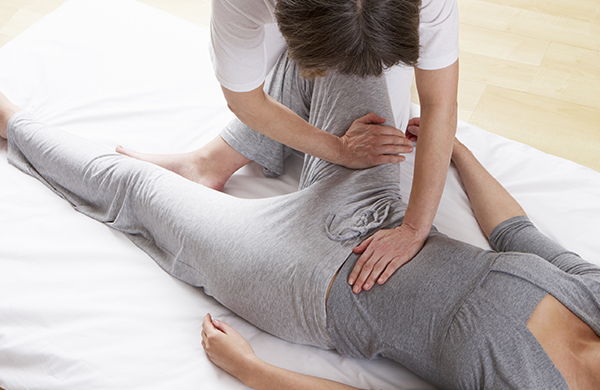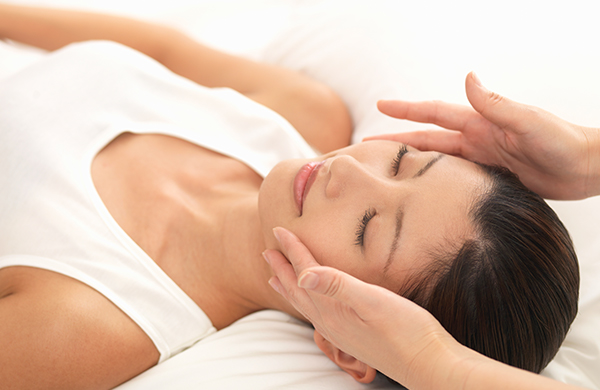
Shiatsu massage, not to be confused with ashiatsu massage or oriental bar therapy, is a type of manual manipulation with a long history in Asian culture. The word itself means “finger pressure,” but it generally refers to a relaxing massage that can help you feel completely de-stressed or totally energized, depending on how many mugs of coffee you chug before your appointment (note: do not chug coffee before a massage).
What is shiatsu massage?
A Japanese massage rooted in Chinese medicine
Shiatsu is kind of Japanese massage—or rather, bodywork—rooted in Chinese medicine. This influence can be seen in two underlying principles of shiatsu massage: qi and meridian theory. Qi translates roughly to energy or life force; it’s what gives someone their vitality. And qi travels throughout the body along pathways, known as meridians. (If all this sounds a bit familiar, you’re probably recalling what you’ve heard about acupuncture and acupressure, both of which also rely on these theories of traditional Chinese medicine.)
A balanced qi helps the body function like it should and heal itself more efficiently when confronted with illness or damage. But, just like any seasoned yogi in tree pose, this energy can lose its balance, which is where shiatsu massage steps in.
How it works
Rebalancing the qi

Shiatsu involves identifying these imbalances in qi and applying pressure along the body’s meridians to correct them. Firm pressure, it’s believed, dislodges blockages, allowing qi to resume its healthy flow throughout the body.
And there’s something to be said for this theory: just imagine qi and its movement as not so different from blood in the circulatory system. Both blood and qi infuse the body with vitality and energy, and both flow more readily with movement and exercise, whether you’re running or practicing yoga or qigong. And just as massage helps restore blood flow to areas with poor circulation, it can likewise help revive the flow of qi to areas where it’s depleted.
Shiatsu massage techniques
A mix of targeted pressure, stretching, and joint manipulation

While shiatsu practitioners use their fingers and hands to target pressure points, they also employ a range of other massage techniques to enhance relaxation and release tension. One is applying deep pressure using other body parts, such as their own elbows, fists, knees, and feet.
An important aspect of shiatsu massage comes into play here: the client often lays on a floor mat rather than a massage table. This allows for the therapist to leverage their body weight to apply deep pressure, while also minimizing the fatigue on their own body.
In addition to applying pressure, the therapist will also stretch limbs and rotate joints, working out kinks and enhancing flexibility. Another technique in their repertoire is called kembiki, which involves massaging muscles with gentle pushes, causing the body to rock from side to side.
Benefits of shiatsu massage
Expect to feel centered and relaxed

While there’s no scientific evidence to support the principles of qi and meridians, shiatsu is nonetheless recognized as a relaxing treatment that tames tension and promotes good circulation. And, because some studies have found that massage has other positive physiological effects— such the release of oxytocin, often called the body’s “love hormone” because of its role in social bonding and positive emotions—shiatsu may help calm the nervous system and reduce stress, known to cause a variety of health problems.
What to expect and how to prep
You can basically go in your pajamas

In many ways, getting a shiatsu massage is similar to getting a Thai massage. As mentioned above, you’ll be invited to lay down on a floor mat rather than a massage table. Your massage is unlikely to involve oil. That’s a good thing, because you’ll also remain fully clothed—a selling point for modest individuals and never-nudes.
So, really, all you need to do to prepare is wear stretchy or loose, comfortable clothes, which will allow your limbs to be manipulated as the therapist sees fit. Beyond the topic of apparel, check out our guide on how to behave before, during, and after a massage for more general tips.







